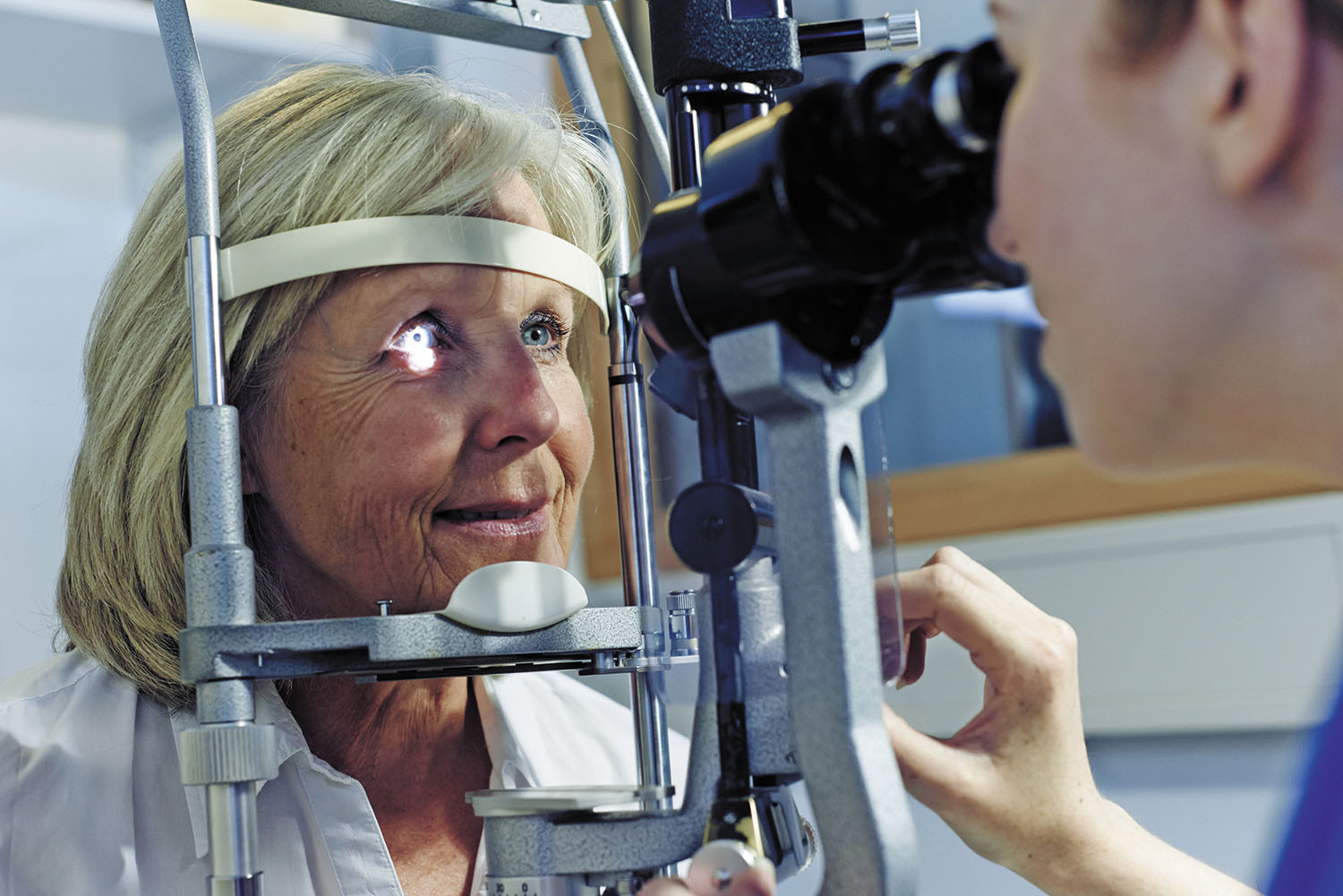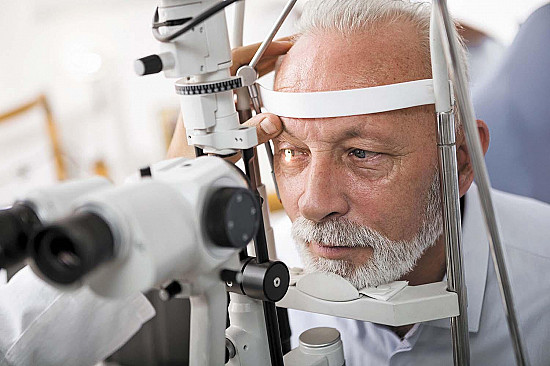Toss your reading glasses?
Today's cataract surgery offers personalized lens choices to suit your goals and needs.
- Reviewed by Toni Golen, MD, Editor in Chief, Harvard Women's Health Watch; Editorial Advisory Board Member, Harvard Health Publishing; Contributor

Most surgeries are considered successful if they merely fix the problem at hand. But today's cataract surgery goes a step further, often leaving your vision even better than before.
A cataract — a cloudiness in the lens of the eye — will affect about half of us before age 75, according to the National Eye Institute. The condition can make everyday activities such as reading, handiwork, golf, or driving at night progressively more difficult. But cataracts are typically a later-life addition to other vision problems such as being nearsighted, being farsighted, or seeing blurry at all distances from astigmatism.
While cataract surgery has been the go-to treatment for seven decades, it has evolved dramatically. Recent years have served up a veritable à la carte menu of lens choices to replace the natural ones removed during the procedure. These customizable options not only restore unclouded vision, but often reduce your need for glasses or contacts. Some people can even toss their long-needed reading glasses, says Dr. Nandini Venkateswaran, a surgeon specializing in cataract surgery and corneal disease at Harvard-affiliated Massachusetts Eye and Ear.
"The effect of getting one of the more advanced lenses can be similar to laser surgery for vision correction," she says. "Back in the day, we were just trying to get the cataract out. Now we're trying to figure out which lens will help make each person happiest. Patients' experiences are much more nuanced."
Stopgap measures
Vision difficulties often creep up as cataracts form. Your glasses seem not to work anymore, even with a new prescription; colors appear faded; everything looks dimmer; or the glare from oncoming headlights seems overwhelming.
Even after your doctor confirms you have cataracts — a process that involves a comprehensive eye exam — you won't necessarily need surgery right away. Your doctor may recommend the procedure sooner, though, if you also have another eye condition that cataracts make harder to manage.
In the meantime, you might be able to boost your visual clarity by trying a few other strategies, including using brighter lights or a magnifying glass to do detailed tasks, such as reading or needlework; avoiding nighttime driving; or wearing tinted glasses that cut glare. (Protecting your eyes from sunlight can also slow cataract progression.)
Lens options
Deciding to go ahead with cataract surgery is just the first step. The next is determining which type of replacement lens is best suited to your vision (including other eye conditions) and goals. It's wise to check your health insurance coverage before this point, Dr. Venkateswaran notes, since most advanced lenses are costly and aren't covered. Lens options include the following:
Monofocal. This fixed-focus lens offers the ability to see clearly at one distance point, whether up close (good for reading), far away (driving), or at arm's length (computer work). You'll need glasses for all the other distances you didn't choose. "Depending on what you spend much of your days doing, it's nice to have a lens that's focused for that," Dr. Venkateswaran says. You might also choose a lens providing near vision for one eye and one providing far vision for the other eye, a combination called monovision. It can be the best of both worlds, allowing you to ditch your glasses more of the time.
Toric. This is a special type of monofocal lens geared toward people with astigmatism — a flaw in the curvature of the cornea — that compensates for the eye's abnormal shape. Like a regular monofocal lens, it focuses vision at a single distance, "allowing you to be more independent of glasses for the distance you choose," she says.
Extended depth-of-focus. This lens offers much-improved distance and middle vision, paring your overall need for glasses. But keep those readers handy, since close-up vision doesn't typically improve.
Wider-range. Also known as multifocal or trifocal lenses, these options work like progressive or bifocal lenses in eyeglasses. Your eyes and brain work together to decide which part of the lens you need at any given moment. "It's a really nice option for individuals who want to be out of glasses about 90% of the time," she says. But these lenses do pose higher risks of experiencing glare and halos around bright lights.
Light-adjustable. The newest technology features a customizable lens containing light-sensitive material that allows the focusing distance to be changed by light treatments soon after the surgery, if desired. "Patients can try the lenses, see if they like the distance they've chosen, and lock it in after surgery," Dr. Venkateswaran says. She notes that the in-depth process requires up to seven postoperative visits per eye to tweak results.
Image: © Phil Fisk/Getty Images
About the Author

Maureen Salamon, Executive Editor, Harvard Women's Health Watch
About the Reviewer

Toni Golen, MD, Editor in Chief, Harvard Women's Health Watch; Editorial Advisory Board Member, Harvard Health Publishing; Contributor
Disclaimer:
As a service to our readers, Harvard Health Publishing provides access to our library of archived content. Please note the date of last review or update on all articles.
No content on this site, regardless of date, should ever be used as a substitute for direct medical advice from your doctor or other qualified clinician.
















